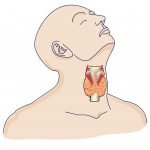Cellulite and Carbon Dioxide Bath
I put on the ‘fat suit’ and went outside and walked around. I was really nervous about being found out, but nobody would even make eye contact with me. It really upset me. – Gwyneth Paltrow
For the first time ever, overweight people outnumber average people in America. Doesn’t that make overweight the average then? Last month you were fat, now you’re average – hey, let’s get a pizza! – Jay Leno
It’s okay to be a fat man. It’s prestige and power and all of that. But fat women are seen as just lazy and stupid and having no self-control. – Camryn Manheim
I’d kill myself if I was as fat as Marilyn Monroe. – Elizabeth Hurley
The dread of not being among the glamorous, thin people who grace advertisements has generated a sustained new industry to serve the growing numbers of women and men choosing to alter their bodies to widely advertised standards.
Cellulite is the characteristic appearance of dimpled, “cottage cheese-like” skin surface change typically seen in women on the thighs and buttocks. It is also commonly seen on the abdomen, breasts and arms. Given that the occurrence of cellulite is nearly universal in post-pubertal females, it is thought of as a female secondary sex characteristic (Avram, 2004). Prevalent in women and rare in men, it is thought that most likely, hormones contribute to changes in the architecture of fat cells and the surrounding tissue. Cellulite is formed when fats, toxins and excess fluids build up under the skin. Excess subcutaneous fat essentially bulges into the dermis, forming the orange peel appearance. Since women have thinner skin than men, the dimpling effect is more easily seen in females (Wanner and Avram, 2008; Avram, 2004). Gynoid lipodystrophy, or cellulite, is the irregular dimpled skin surface of the thighs, abdomen and buttocks in 85% of post-adolescent women (Smalls et al., 2005).
What can we possibly do with those dimples that form around the thighs as people age? It is not just vanity that motivates so many baby boomers to see the changes to their bodies as undesirable. They also recognize that these changes are signals of trouble ahead and potential declining health. For example, there are numerous messages in popular media linking obesity with late-onset diabetes, hypertension and cardiovascular disease. With these concerns circling through their experience, the appearance of cellulite is a red flag.
In 2007, liposuction in America was the top cosmetic surgical procedure in both men and women. In that same year, more than 2.7 million people used Botulinum Toxin Type A, and the number of cosmetic procedures overall increased 42% from 2003. Women had nearly 10.7 million cosmetic procedures, 91% of the total. In fact, in 2007 Americans invested more than $13 billion to look beautiful and svelte (ASAPS, 2007).
Many predisposing factors seem to influence cellulite onset, including gender, heredity, race, body weight and age. Hormones and impairment of both microvascular and lymphatic circulation are considered the most important etiological factors (Rona et al., 2006). In a recent study, 70% of those interviewed considered that cellulite hampered their lives greatly, and many of these opted for cosmetic and plastic surgery (Hexsel et al., 2006; Honigman et al., 2004). Such determination to eradicate unsightly cellulite has created many choices. As it turns out, many of the options do not have the desired permanent effect, yet thousands seek to sculpt their bodies in defiance of aging. The options available range from magical creams, botanical formulations and a combined radiofrequency, infrared light and mechanical suctioning massage device (Alster et al., 2005) to more invasive cosmetic interventions such as mesotherapy, ultrasonic hydroliposuction and plastic surgery.
This repertoire of devices, techniques and products is well established in North America. However, a novel treatment used extensively in Europe and not widely known in North America is the dry carbon dioxide bath. This treatment for cellulite may well be of strong interest to NDs who would prefer to avoid pharmaceuticals, surgeries and seriously invasive procedures.
Development of Cellulite
It is useful before investigating the potential of this interesting therapy utilizing carbon dioxide, though, to review the development of cellulite through its four stages and to investigate its pathogenesis.
In its “precellulite” state, the skin appears smooth and firm. On ultrasound, the dermis is thick with minimal fluid retention, and collagen fibers are relatively normal with few linkages. Fatty deposits have not protruded into the dermis.
- Stage I: Changes occur in the deeper cellular layers. The vessel walls become permeable, causing edema between the adipocytes. The adipocytes become engorged with lipids, which results in clumping. The lymphatic circulation is compromised and edema ensues.
- Stage II: Changes are seen in superficial layers of the dermal and subdermal regions. Adipocyte clumping and collagen fiber linkage hampers blood circulation, resulting in severely damaged microcirculation. Thinning of the epidermis and dermis makes the ‘orange peel’ appearance evident.
- Stage III: The vascular impairment has more marked effects on the dermis, giving rise to metabolic changes and thinning due to the reduction in protein synthesis and the recovering processes. Toxins unable to be removed adequately by an impaired circulatory system cause adipocytes to clump together. These clumps constitute micronodules surrounded by a thick and hard collagen layer and fatty masses. Upon palpation, the orange peel phenomenon is clearly observed.
- Stage IV: Miocronodules clump together to form hard macronodules in the dermal layer. Pain can be felt by some people, due to nerves being compressed by nodules (Wilhelm et al., 2006).
The pathogenesis of cellulite onset is still unknown. What is known is that cellulite results from blood and lymphatic microcirculation damage, which gives rise to structural changes in the fatty layer and surrounding collagen matrix. In particular, superficial microcirculation appears to be less efficient, and this results in subcutaneous edema due to altered permeability of blood vessels; this condition can induce sclerosis and a reduced replacement of collagen fibers (Wilhelm et al., 2006).
Weight and obesity also play a role in cellulite development. Weight loss has been reported to improve cellulite severity, yet skin dimpling may not show visible demonstrative changes. However, histological analysis suggests that fat globules retract out of the dermis with weight loss (Rawlings, 2006). Even so, not all women see changes in their cellulite after weight loss. In one study, women who complied with a weight-loss program and successfully lost weight found that their cellulite did not change, and actually had worsened (Smalls et al., 2006).
Carbon Dioxide Therapy
In any case, carbon dioxide therapy – a valuable approach to treating cellulite – has been used for many ailments, ranging from heart disease to diabetes, as well as cellulite. It was used widely in America at the beginning of the 20th century, finding its way into many sanitariums. In his book, Rational Hydrotherapy, John Harvey Kellogg recognized and used the carbon dioxide bath, which he called the effervescent or artificial “Nauheim” bath. He included several recipes for their preparation. Hot baths are contraindicated for heart diseases and chronic nephritis, and rather than using hot baths or the Scotch douche, Dr. Kellogg used a neutral artificial Nauheim bath for these conditions (Kellogg, 1903).
These baths used by early doctors were very different, though, from the carboxytherapy that is being advocated by medical aesthetists today. Carboxytherapy involves the subcutaneous injection of CO2 to produce vasodilation and increase the speed of microcirculation. Improving the lymphatic system’s impact on the microcirculation is the rationale behind this therapy. Carbon dioxide’s ability to diffuse into the bloodstream results in subcutaneous emphysema. The emphysema is then followed by erythema and heat sensation, a sign of the vascular activity of the CO2 gas. The mechanism of action of CO2 is visible and measurable through microangiological investigation (videocapillaroscopy with optical probe and laser doppler fluxometry) (Leibaschoff and Coll, 2008).
It seems possible from a naturopathic perspective that enduring a procedure of carboxytherapy whose chief objective is to improve lymphatic circulation could also be achieved with lymphatic drainage massage. Of interest, then, would be a closer look at the version of carbon dioxide therapy referenced earlier, the Nauheim bath or carbon dioxide bath.
The ”artificial” Nauheim bath used by American doctors 100 years ago imitated the natural spring baths found in Nauheim, Germany. These waters contained various salts and large amounts of carbonic acid gas. Bathing at Bad-Nauheim has occurred since the early 19th century. Nauheim was renowned for its healing properties in rickets, scrofulous diseases, gout and rheumatism. The scrofulosis and rickets treated were diseases of malnutrition; the baths did not exert a specific influence, but the improvement in metabolism accomplished a cure by the general tonic effects exerted. Scrofulus was characterized by obstinate and recurring cutaneous eruptions such as eczema, acne and an excoriating nasal discharge. Scrofulosis patients had enlarged lymphatic glands, and their bodies were soft and weak (Harveian, 1903).
By 1880, in keeping with the scientific experiments and observations of Dr. August Schott followed by his brother, Dr. Theodor Schott, the Nauheim bath was established as an effective treatment for cardiac hypertrophy (Harveian, 1903; Dieffenbach, 1909). The baths’ ameliorating effect on chronic heart conditions was ”beyond question” (Harveian, 1903).
The Nauheim baths attracted many, including Franklin Roosevelt, who as a young boy visited the Bad-Nauheims several times, accompanying his father who suffered from heart disease. Since few could afford the long travel to Europe, artificial Nauheim baths in America were designed to replicate the benefits found at those in Germany. These effervescent baths were administered in bathtubs with water that was charged with saline substances and carbon dioxide gas. To produce the carbon dioxide gas in the bath, it is necessary that an acid come in contact with an alkaline carbonate, setting free the carbon dioxide; or salines may be dissolved in the water and the carbon dioxide added from a generator (Abbott, 1911).
The ingenuity of early doctors to simulate a successful protocol in America was remarkable. Many formulas surfaced and many methods were utilized to administer the bath (Abbott, 1911; Kellogg, 1903; Pope, 1909; Dieffenbach, 1909). An example of a “very complete and satisfactory formula” is the following:
- Sodium carbonate: 1½lb
- Sodium bicarbonate (baking soda): ½lb
- Calcium chloride: 3lb
- Sodium chloride: 2lb
- Sodium bisulphate: 1lb
Mix the first four ingredients, then dissolve the mixture in a few inches of warm water in the bottom of the bathtub. When thoroughly dissolved, fill the tub with water at the desired temperature. The sodium bisulphate, which is the acid part of the formula, should be granular or finely pounded and dissolved separately in a wooden pail containing hot water. As it may require some time for this to dissolve, it should be prepared before the bath is to be given. When thoroughly dissolved, pour into the tub and quickly mix with the rest of the water. The bath is now ready for use. The temperature of the bath should range from 85º to 92º F (Abbott, 1911).
The ideal carbonated bath is one in which the carbon dioxide is held in solution in the water and is only slowly given off (Harveian, 1903).
Today, the Nauheim bath has continued its evolutionary process, and a spin-off therapy, the carbon dioxide bath, has found a place in European balneotherapy in the treatment of many diseases. Controlled clinical studies have shown beneficial outcomes for the following conditions:
- Arterial occlusive disease in all clinical stages I-IV
- Microcirculatory disorders of any etiology
- Cerebral insufficiency
- Arterial hypertension
- Reflex sympathetic dystrophy
- Pain therapy
- Venous insufficiency of all stages, including venous ulcers and non-healing skin wounds, especially in diabetes mellitus (Bender et al., n.d.)
The artificial Nauheim bath was eventually abandoned in North America along with sanitariums. Other applications of the carbon dioxide treatment, though, have been developed to treat diseases that the artificial Nauheim bath had once successfully treated. Instead of adding salts and acids to create carbon dioxide gas, actual carbon dioxide gas from a cylinder passes through a perforated tube placed in the bottom of the bathtub, and thermal mineral waters are added. Similar effects are noted as in both the natural and artificial Nauheim bath. After immersion, minute bubbles of carbon dioxide collect on the surface of the skin, and recur immediately when brushed off. These bubbles appear to stimulate the cutaneous circulation by dilating blood vessels and directing the blood to the periphery (Pope, 1909) The vasodilation achieved by injecting CO2 into the subcutaneous tissue with the modern medical procedure of carboxytherapy was equally championed by doctors a century ago with these carbon dioxide baths.
Similar benefits gained with a wet carbon dioxide bath are also found with the dry carbon dioxide bath. CO2 is administered into a closed, sealed bag much like a balloon. The procedure lasts about 40 minutes until the carbon dioxide passes through the skin and the bag empties. The dry carbon dioxide bath is administered while the patient lays supine on a treatment table.
Benefits of CO2 Therapy
Transcutaneous application of carbon dioxide has the following undisputed physiological and therapeutic effects: rightward shift of oxyhemoglobin dissociation curve, reduction of blood viscosity, dilation of capillaries and arterioles, restoration of patency of closed or stenosed capillaries, stimulation of heat and inhibition of cold receptors of the skin, and antisepsis (Bender et al., YEAR). It increases blood circulation, lowers blood pressure, improves the healing of wounds and rejuvenates tired muscles. Similar effects, such as improved microcirculation and vasodilation that are seen with carboxytherapy, are also experienced by those receiving the dry carbon dioxide treatment. Ten to 15 treatments of the dry carbon dioxide baths are sufficient in restoring cellulite tissue to a firm and smooth appearance. A typical protocol consists of 2 to 3 baths per week.
Given this history and pathogenesis, we may wonder more specifically why carbon dioxide is so effective in treating cellulite. An answer to this question can be found in the long-forgotten physiology classes that covered the Bohr effect. The increase of carbon dioxide in the blood causes decreased affinity of hemoglobin for oxygen, allowing oxygen to be released to the tissues where it is needed. However, there are many more current studies that demonstrate the interconnections between CO2 levels and smooth muscles (Williams et al., 1987). Simon Baruch offered that the absorbed CO2 in a CO2 bath stimulates involuntary muscle fibers.
“Especially does this stimulating action inure to the smooth muscles of the vascular system and the heart, increasing tonicity and enhancing its contracting power” (Baruch, 1920). In Europe, carbon dioxide is a successful treatment for cardiac and peripheral arterial diseases (arteriosclerosis in the lower limbs, coronary diseases), high blood pressure, arterial complications in diabetics and postoperative treatment following arterial surgery. Blood pressure is demonstrably reduced, pain is alleviated and often ended, the distance the patient is able to walk increases and life quality improves (Bender et al., n.d.).
We have seen how the interest among early NDs and others in using carbon dioxide has evolved from nature cure approaches exemplified by the Nauheim baths to contemporary injection therapy, and even to the sealed bag unit in European balneotherapy spas. The benefits of carbon dioxide are worth closer examination by the contemporary naturopathic professional. Demand by patients for assistance in reducing cellulite as part of a larger effort by the Baby Boomer generation to mitigate the effects of aging will draw even more attention to this treatment approach. As we have seen, this remarkable therapy has numerous valuable indications along with treating cellulite issues.
 Sussanna Czeranko, ND graduated from CCNM in 1994 and presently works at NCNM in the advancement department. She has incorporated her strong interests in balneotherapy and breathing therapies into a current project focused on bringing Nature Cure therapies back into naturopathy. The project involves the creation of a ‘Naturopathic Vitalism’ series incorporating balneotherapy, nature cure and the herbal arts. Jointly designed with Dr. Glen Nagel, the series culminates in July with the first annual “Physician Heal Thyself,” to be held at Breittenbush Hot Springs and open to everyone. Dr. Czeranko plans to teach carbon dioxide treatments beginning in summer.
Sussanna Czeranko, ND graduated from CCNM in 1994 and presently works at NCNM in the advancement department. She has incorporated her strong interests in balneotherapy and breathing therapies into a current project focused on bringing Nature Cure therapies back into naturopathy. The project involves the creation of a ‘Naturopathic Vitalism’ series incorporating balneotherapy, nature cure and the herbal arts. Jointly designed with Dr. Glen Nagel, the series culminates in July with the first annual “Physician Heal Thyself,” to be held at Breittenbush Hot Springs and open to everyone. Dr. Czeranko plans to teach carbon dioxide treatments beginning in summer.
References
Abbott GK: Hydrotherapy for Students and Practitioners of Medicine. Loma Linda, 1911, The College Press, pp. 169.
Alster TS, Tanzi EL: Cellulite treatment using a novel combination radiofrequency, infrared light, and mechanical tissue manipulation device, J Cosmet Laser Ther Jun;7(2):81-5, 2005.
The American Society for Aesthetic Plastic Surgery: Statistics, www.surgery.org/press/statistics-2007.php.
Avram MM: Cellulite: a review of its physiology and treatment, J Cosmet Laser Ther 6:181-185, 2004.
Baruch S: An Epitome of Hydrother







